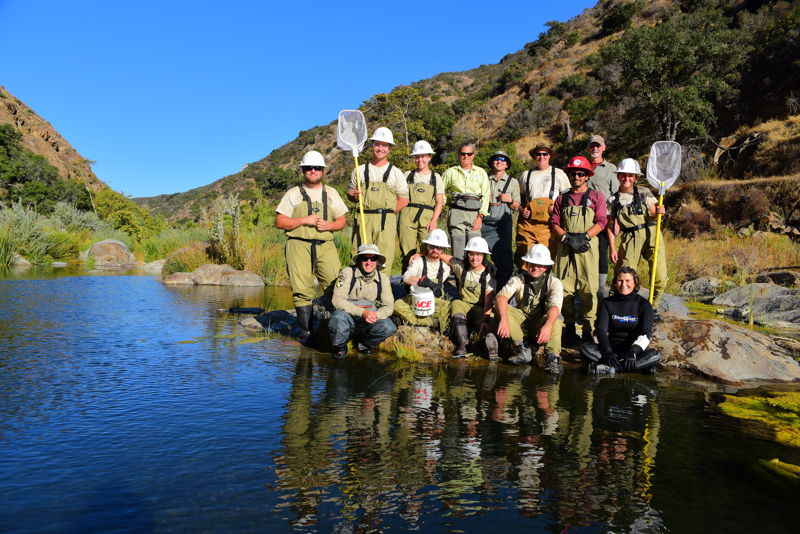ACE Pacific West South had the unique opportunity this past fall to partner with California Trout on an invasive species removal project just outside of Temecula, CA. The eight-person ACE crew led by Joseph Ortiz worked alongside the US Fish and Wildlife Service and the California Department of Fish and Wildlife in the Santa Margarita River. 

 Electrofishing is a common scientific survey method that is often used to determine species abundance and density. When used in surveys, the fish are usually measured and recorded and then returned to their habitat unharmed. For invasive species removal, electrofishing is used to briefly stun and slow down the non-native species so that they can be removed manually from the habitat. This method allows the native species to quickly recover from the electric shock and return to their natural state. Electrofishing uses direct current electricity, which flows between a submerged cathode and anode. The current causes the fish to swim toward the anode where they are removed using nets and buckets.
Electrofishing is a common scientific survey method that is often used to determine species abundance and density. When used in surveys, the fish are usually measured and recorded and then returned to their habitat unharmed. For invasive species removal, electrofishing is used to briefly stun and slow down the non-native species so that they can be removed manually from the habitat. This method allows the native species to quickly recover from the electric shock and return to their natural state. Electrofishing uses direct current electricity, which flows between a submerged cathode and anode. The current causes the fish to swim toward the anode where they are removed using nets and buckets. 
 Once the US Fish and Wildlife Service and CA Department of Fish and Wildlife administered the electric current, the ACE crew members followed with nets to retrieve the fish. The crew also assisted in surveying, classifying, and using extermination techniques for invasive fish. In situations where the river was too high to administer the electric current via standing on the river bed, the team utilized a small pontoon to get the job done safely.
Once the US Fish and Wildlife Service and CA Department of Fish and Wildlife administered the electric current, the ACE crew members followed with nets to retrieve the fish. The crew also assisted in surveying, classifying, and using extermination techniques for invasive fish. In situations where the river was too high to administer the electric current via standing on the river bed, the team utilized a small pontoon to get the job done safely.
 The species removed included green sunfish, black bullhead, golden shiner, bluegill, largemouth bass, mosquitofish, American bullfrog, and red swamp crayfish. These species do not exist naturally in this area and outcompete the native species for food and resources. The project will continue in the fall of 2020. ACE is excited to have had this unique opportunity to learn about these techniques alongside our partners in the field.
The species removed included green sunfish, black bullhead, golden shiner, bluegill, largemouth bass, mosquitofish, American bullfrog, and red swamp crayfish. These species do not exist naturally in this area and outcompete the native species for food and resources. The project will continue in the fall of 2020. ACE is excited to have had this unique opportunity to learn about these techniques alongside our partners in the field. 


